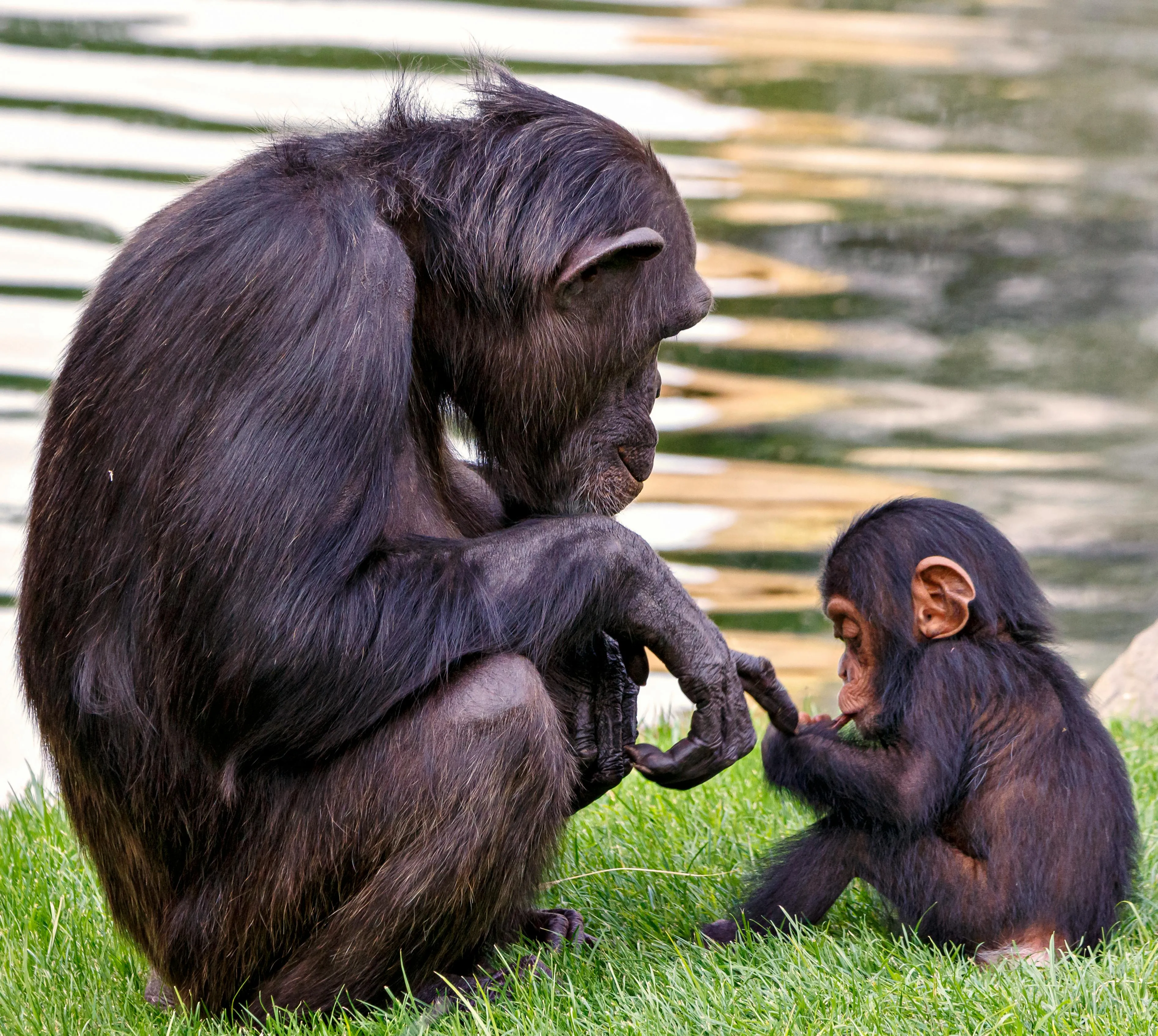Product · 16 min read
What is Behavior? A Comprehensive Guide.
Behavior is an essential aspect of both human and animal life, encompassing a wide range of actions, reactions, and interactions.

Introduction
We see behavior all around us, every day. Think about simple things, like reaching for a coffee cup, complex human social interactions, like a group discussion or social interactions in animal behavior . It defines us and connects us to the world. Even so, understanding “What is behavior?” is still a big and interesting question in science.
I. Defining Behavior: The Foundation
At its most basic level, Behavior means the actions or inactions of living things. These actions are organized from within. They are responses to things happening inside or outside the body. This wide definition covers many things. It includes a tiny bacterium moving toward food. It also includes a person writing a song. The main point is that behavior can be seen or measured, even if special tools are needed.
When we study behavior, we often talk about two types: Overt Behavior and Covert Behavior. Overt behaviors are actions that others can directly see and measure. For example, walking, talking, eating, or a bird building a nest are overt behaviors. These are the actions we usually think of when we say “behavior.” They are outward signs that can be seen, heard, or felt by someone else.
On the other hand, Covert Behavior refers to internal thoughts and feelings that others cannot see. These behaviors happen inside a person or an animal. Others cannot directly access them. Examples include thinking, feeling, remembering, or dreaming. We cannot see covert behaviors directly. But they are still behaviors because they are organized responses to stimuli. We can often guess them from overt behaviors or body measurements. For instance, a fast heartbeat (an overt body response) might suggest anxiety (a covert emotional state).
Understanding Behavioral Patterns is very important in behavioral science. These are actions or responses that happen again and again. Seeing these patterns helps scientists guess what might happen next. It also helps them understand why things happen. For example, a bird flying south every year shows a behavioral pattern.
It can be very interesting to observe a mother and her infant playing together in a certain pattern. This is especially true if the mother or infant is undergoing treatment or has specific characteristics (e.g., drug abuse, psychological or developmental issues) that are the focus of current research because past experiences, learning, and environmental factors often influence these patterns.
How behavior connects with Internal Mental Processes is a key idea in modern behavioral understanding. Early studies of behavior mainly looked at actions we could see. But today, Psychology and Neuroscience agree that our thoughts, feelings, and how we see things greatly affect what we do. These internal processes are often called Cognitive Processes. They include many mental actions. These are Perception (how we understand what our senses tell us), Problem-Solving (how we deal with challenges), and Decision-Making (how we choose between options). These mental skills are not just ideas. They come from how our brain works. They link our hidden inner world to the visible world of our actions.

II. The Science of Studying Behavior
Behavioral Psychology is the field that studies behavior in a systematic way. This field has changed a lot over time. At first, it focused only on actions we could see. It looked at how these actions related to things in the environment. It mostly ignored what went on inside our minds. But today, modern behavioral psychology also includes thoughts and biology. It understands that the mind, brain, and environment all work together to shape how humans or animals behave.
Behavioral Research is at the heart of this science. It uses many different ways to explore, describe, predict, and explain behavior. The methods chosen depend on the questions asked or research hypothesis. Here are some common ways:
- Observations: This means carefully watching and writing down behavior. This can happen in natural places or in controlled settings. For example, watching animals in their natural home helps us see how they act on their own. This gives us good information about their natural actions. Other times, researchers set up specific situations to make certain behaviors happen.
- Experiments: These are the best way to find out what causes what. In an experiment, researchers change one thing (the independent variable). Then they watch how it affects behavior (the dependent variable). They also try to keep everything else the same. This method allows for exact measurement and control. But sometimes, what happens in an experiment might not be exactly like real life.
- Surveys: These gather information using questions or interviews. Researchers can ask many people about their feelings, beliefs, and what they do. Surveys are good for collecting a lot of information quickly. But people might not always answer truthfully, which can affect the results.
Measuring Behavior is very important in behavioral research. It needs to be exact and reliable. This can involve simple things, like counting how many times an action happens. Or it can involve complex body recordings. The goal is to put numbers on behavior. This allows for clear study and comparison. For example, to study anger, researchers might count angry actions. They might also measure how strong those actions are by using a Likert Scale. Measuring behavior is very complex because the scales used to measure it need to be defined very accurately, which involves a lot of fundamental research.
Behavioral Coding is a special way to identify and count observed behaviors. Researchers create a set of rules for classifying behaviors, typically called a Coding System. This ensures that data collection is consistent and precise. For instance, a researcher studying parent-child interaction might use a specific coding system for “joint attention,” developed based on existing research. The researchers would record the parents using audio/video equipment during predefined experimental setups. After recording, they would code or rate the recordings to collect behavioral data that they can further work with.
INTERACT: One Software for Your Entire Observational Research Workflow
From audio/video-based content-coding and transcription to analysis - INTERACT has you covered.

Recently, there has been more focus on Multimodal Research. This means using many different research methods and types of information. The goal is to get a more complete picture of behavior, because it is very complex by nature and many things can affect it. So, one method alone is often not enough. For example, a study might combine watching people with measuring their body responses (like heart rate). It might also use surveys. This helps trying to understand all the different parts of stress. Using different types of information gives a richer and deeper understanding and is an effective way of measuring behavior.
Mangold Observation Studio
The advanced software suite for sophisticated sensor data-driven observational studies with comprehensive data collection and analysis capabilities.

III. Cognitive and Neural Foundations
The mind and the brain are closely linked. This connection is the base of modern behavioral science. Psychology and Neuroscience are two fields that study this link. They offer different ways to understand how our inner states and body systems shape what we do.
Psychology studies the mind and behavior. It looks at the mental processes that create our experiences. It explores how we see the world. It also studies how we learn, remember, and think. And it examines how our feelings affect our choices. In psychology, Cognitive Processes are a main focus. These include:
- Perception: This is how we understand information from our senses. It helps us make sense of our surroundings. How we see things directly affects how we react.
- Problem-Solving: This is the mental work of finding, looking at, and fixing problems. It uses different mental skills. These can be simple trial and error or complex logical thinking.
- Decision-Making: This is choosing one action from many options. It often means weighing good and bad points. Both logical thought and feelings can influence these choices.
Neuroscience studies the body systems of the nervous system. It also looks at how they relate to behavior. It examines the brain, spinal cord, and nerves. It also studies how these structures create mental processes and actions we can see. Tools like Neuroimaging (such as fMRI and EEG) have changed how we study the brain. They let us see the brain working in real-time. This gives us clues about how the brain affects different behaviors and thoughts. We can also use Physiological Measurements (like heart rate or skin conductance). These give us signs of feelings and body states linked to behavior.
Motivation and Emotion are very important for understanding why we act the way we do. Motivation is the inner drive that starts and keeps us doing things to reach a goal. Emotions are complex feelings. They involve how we feel, how our body reacts, and how we show them. Both motivation and emotion are strongly connected to brain circuits. They greatly affect our thoughts and actions. For example, fear (an emotion) can make us avoid things. Hunger (a motivation) makes us look for food.
Also, Learning and Development are basic processes. They constantly shape behavior throughout a living thing’s life. Learning means a lasting change in behavior or knowledge from experience. This can be simple learning, like connecting two things together. Or it can be complex thinking. Development, especially in Developmental Psychology, looks at how mental processes and behaviors change over time. This includes from when we are babies to when we are old. It considers how genes, environment, and social interactions affect how behaviors grow. Understanding these changes over time is key. It helps us find normal and unusual behavior patterns. And it helps us create good ways to help with behavioral problems.

IV. Social Behavior
People are social beings. A big part of our lives involves how we interact with others. Social Behavior includes all actions and reactions between two or more people. This area of study is very rich. It uses ideas from psychology, sociology, and anthropology. This helps us understand the complex ways people or animals interact.
Important parts of social behavior include:
- Communication: This is how we share information, ideas, and feelings with others. It can be spoken (like talking) or unspoken (like body language). Communication is basic to all social interactions.
- Cooperation: This means working together to reach a common goal. Cooperation is needed for groups to survive and do well. It involves working together, trusting each other, and having shared aims.
- Aggression: This is behavior meant to harm oneself, another being or thing. Aggression can be physical, like fighting, or verbal, like insults. Studying aggression means understanding what causes it, what it does, and its results.
- Affiliation: This is the desire to be with others and form friendships. People and animals need to belong. Affiliation behaviors help us feel connected and supported.
- Empathy: This is being able to understand and share another person’s feelings. Empathy helps us act kindly towards others. It also makes social interactions better.
- Altruism: This is helping someone else even if it costs you something. Acts of altruism, like helping a stranger without expecting anything back, are often seen in complex social groups.
These individual social behaviors come together to form complex Social Interactions. These interactions then help create Social Bonds. These bonds, from friendships to family ties, are very important for an animal’s or a person’s well-being and for stable communities. Social psychology and sociology focus on how these interactions and bonds form, change, and sometimes break.
Beyond individual interactions, Social Dynamics refers to the complex forces within groups and societies. These forces affect how everyone acts. This includes things like how groups make decisions, how people follow others, who leads, and conflicts between groups. Understanding social dynamics is key to solving problems in society. This could be promoting health or solving international disagreements. Researchers in this area look at how culture, power, and history shape how people act within a social system.

V. Understanding Behavior
Understanding behavior is a huge job. No single field can do it alone. It needs many different fields working together. These fields look at behavior in different ways. Some of the most important ones are Sociology, Anthropology, Animal Behavior, and Ethology.
Sociology studies human society. It looks at how people interact and how societies are built. Sociologists study how rules, culture, groups, and institutions affect how people act. They might study crime patterns or social movements. They also look at how money policies affect how communities behave. For example, how does living in cities change how people interact and form friendships? Sociology helps us understand behavior on a large scale. It looks at the bigger systems that people live in.
Anthropology, especially cultural anthropology, studies human behavior within culture. Anthropologists look at many different human societies, both old and new. They want to understand why human behavior changes across different cultures. They study customs, beliefs, rituals, and how societies are organized. This helps explain why people in different cultures act the way they do. This view shows how much learning and passing on culture affects behavior patterns. This includes everything from how people talk to how they solve problems. For example, an anthropologist might study how different family systems affect cooperation and friendship in a group.
Animal Behavior is a wide scientific field. It focuses on how animals act. This field tries to understand why animals do what they do. It also looks at how their actions are controlled and how they change over time. It covers many topics. These include how animals find food, mate, avoid danger, and communicate with each other. Researchers in animal behavior often watch animals in their natural environments but also in controlled lab setups. This helps them learn about how animals act and why.
Ethology is closely related to animal behavior. It is the scientific study of animal behavior. It usually focuses on behavior in natural settings. It also sees behavior as something that helps animals survive and adapt. Early ethologists, like Konrad Lorenz and Niko Tinbergen, stressed the importance of studying animals in their natural places. This helped them understand why certain behaviors help animals survive. Ethology often involves careful watching and experiments. This helps us understand the fixed actions, instincts, and learned behaviors that help an animal live and reproduce. For example, the complex dance of a honeybee telling others where to find food is a classic example studied in ethology.
These fields, along with psychology and neuroscience, use Comparative Approaches. This means they compare behaviors across different species. By studying many types of living things, from insects to primates, scientists can find general rules of behavior. They can also understand what pressures from evolution shaped certain behaviors. And they can learn about the biological and environmental things that lead to different behaviors. This way of comparing helps us understand human behavior better. It puts human behavior into a larger biological and evolutionary picture.
VI. Applied Aspects and Disorders
Understanding behavior is not only interesting for science, but has big impacts on real life. This is especially true for helping people with their health and well-being.
One important area is the study and treatment of Behavioral Disorders, which typically cause big problems in a person’s life. This can be at school, home, or with friends, based on e.g. ADHD or a conduct disorder. To help people with these disorders, we need to understand how they start, how they grow, and what they look like. This is where Developmental Psychology is very important. It studies how behaviors change over a person’s life. This helps us find key times for help. It also helps us understand how these disorders progress.
Research on behavioral disorders often uses advanced tools like Neuroimaging. This helps researchers understand how the brain works in disordered behaviors. For example, fMRI studies might show different brain patterns in people with anxiety. This happens when they see things that make them afraid. Also, Physiological Measurements, like heart rate or hormone levels, can show clear signs of feelings and body states linked to behavioral problems.
Behavioral Recognition and Behavioral Coding are also used in clinics and research. They help to find and measure specific behaviors linked to disorders. For example, in therapy, a therapist might use behavioral coding. They would track how often a child acts out. This helps them see if the treatment is working. These research methods, including Observations, Experiments, and Surveys, give us a rich set of tools to study and treat behavioral issues.
Finally, Multimodal Research is very important for studying behavioral disorders. It combines information from brain scans, body measurements, watching behaviors, and surveys. This helps researchers get a full picture. They can see how biology, psychology, and social factors all work together. This integrated approach is key to help us create better and more personal ways to help people with behavioral disorders to improve their lives.
VII. Conclusion
We have explored many parts of behavioral science. It is clear that “What is behavior?” is not a simple question. It needs many different fields to work together. Behavior is complex. It is shaped by biology, psychology, and the environment. This happens from the smallest parts of the brain to the biggest social groups.
We saw how Behavioral Psychology and Neuroscience help us understand. They show us the inner workings and thought processes. These include Perception, Problem-Solving, and Decision-Making. These drive our actions. The difference between Overt Behavior and Covert Behavior shows how deep this field is. It looks at both visible actions and hidden Internal Mental Processes. Also, studying Motivation, Emotion, Learning, and Development gives us key insights. These insights show us what starts, keeps, and changes our behavioral patterns over time.
Our social world greatly affects us. This is clear in the study of Social Behavior. Concepts like Communication, Cooperation, Aggression, Affiliation, Empathy, and Altruism show how people interact. They also show how people form Social Bonds. Fields like Sociology and Anthropology help us understand this. They provide ways to see how cultural rules and Social Dynamics shape these interactions. This gives a wider view of individual actions.
Beyond human behavior, Animal Behavior and Ethology show that behavior principles are universal. They apply to all species. They offer good ways to compare behaviors. This helps us understand how evolution affects behavior. Finally, we use Behavioral Research methods. These include Observations, Experiments, Surveys, Behavioral Coding, Neuroimaging, and Physiological Measurements. These methods help us study and deal with problems like Behavioral Disorders. Often, insights from Developmental Psychology and Animal Studies guide us.
VIII. Summary
In short, behavior refers to the actions, reactions, and inactions of living things that can be observed and measured. Behavior is not just something we do. It is a basic way that life expresses itself in response to stimuli and how they interact with the world around them.
INTERACT: One Software for Your Entire Observational Research Workflow
From audio/video-based content-coding and transcription to analysis - INTERACT has you covered.
